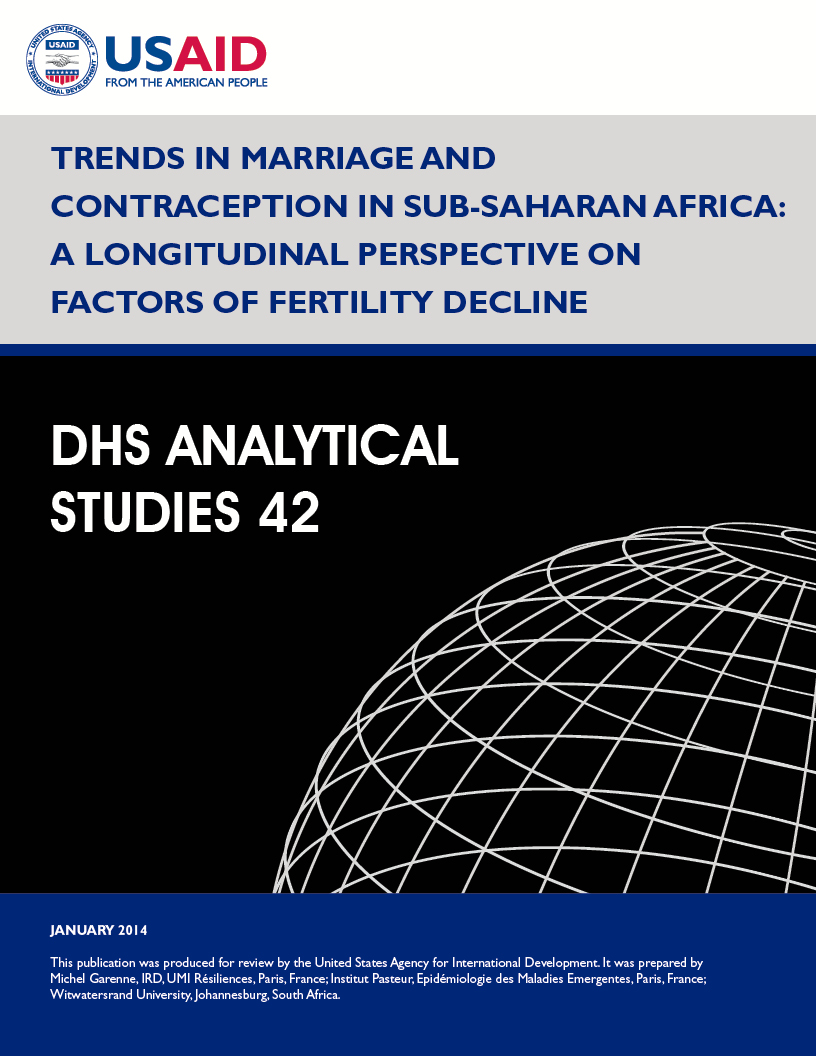- PUBLICATIONS
- JOURNAL ARTICLES
- ACCESS PUBLICATIONS
Publications Summary
- Document Type
- Analytical Studies
- Publication Topic(s)
- Family Planning, Fertility and Fertility Preferences
- Language
- English
- Recommended Citation
- Garenne, Michel. 2014. Trends in Marriage and Contraception in sub-Saharan Africa: a Longitudinal Perspective on Factors of Fertility Decline. DHS Analytical Studies No. 42. Rockville, Maryland, USA: ICF International.
- Download Citation
- RIS format / Text format / Endnote format
- Publication Date
- January 2014
- Publication ID
- AS42
Download
 Trends in Marriage and Contraception in Sub-Saharan Africa: A Longitudinal Perspective on Factors of Fertility Decline (PDF, 5192K)
Trends in Marriage and Contraception in Sub-Saharan Africa: A Longitudinal Perspective on Factors of Fertility Decline (PDF, 5192K)
